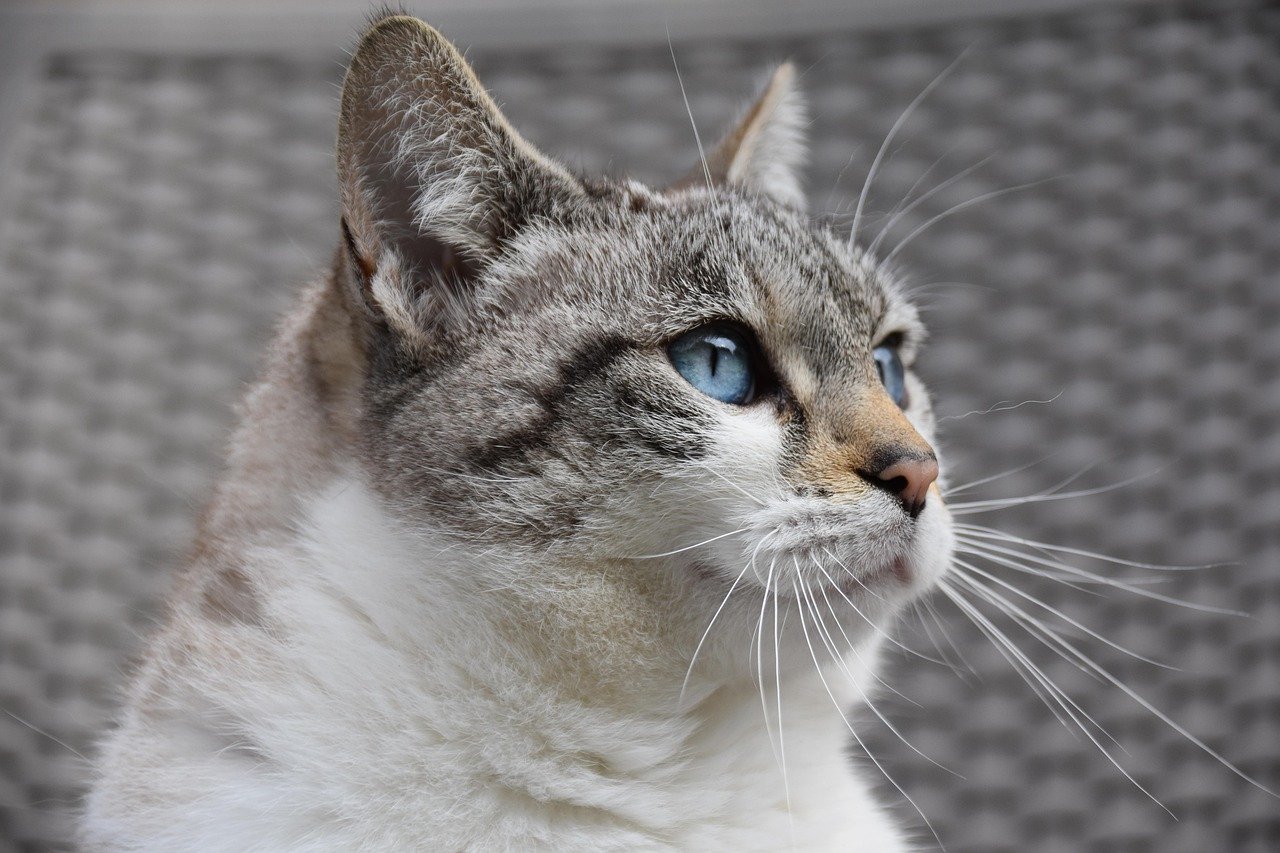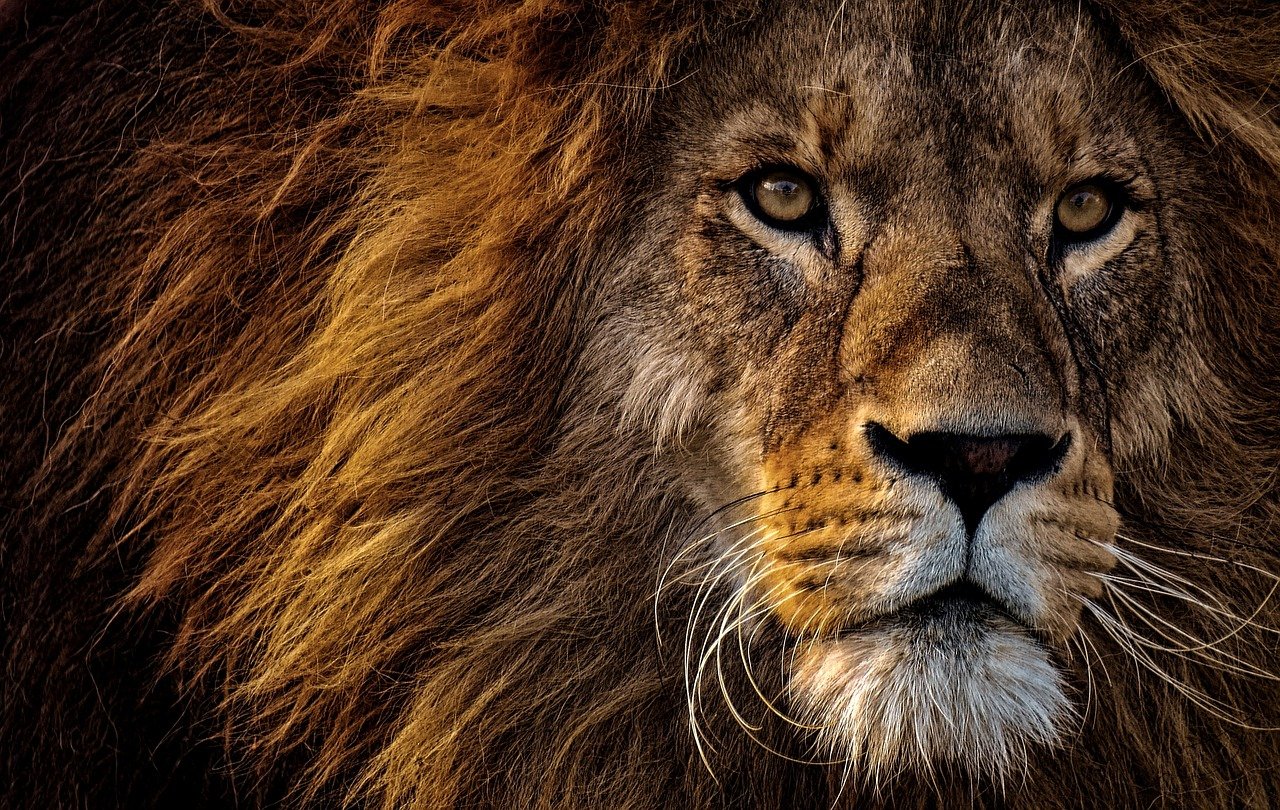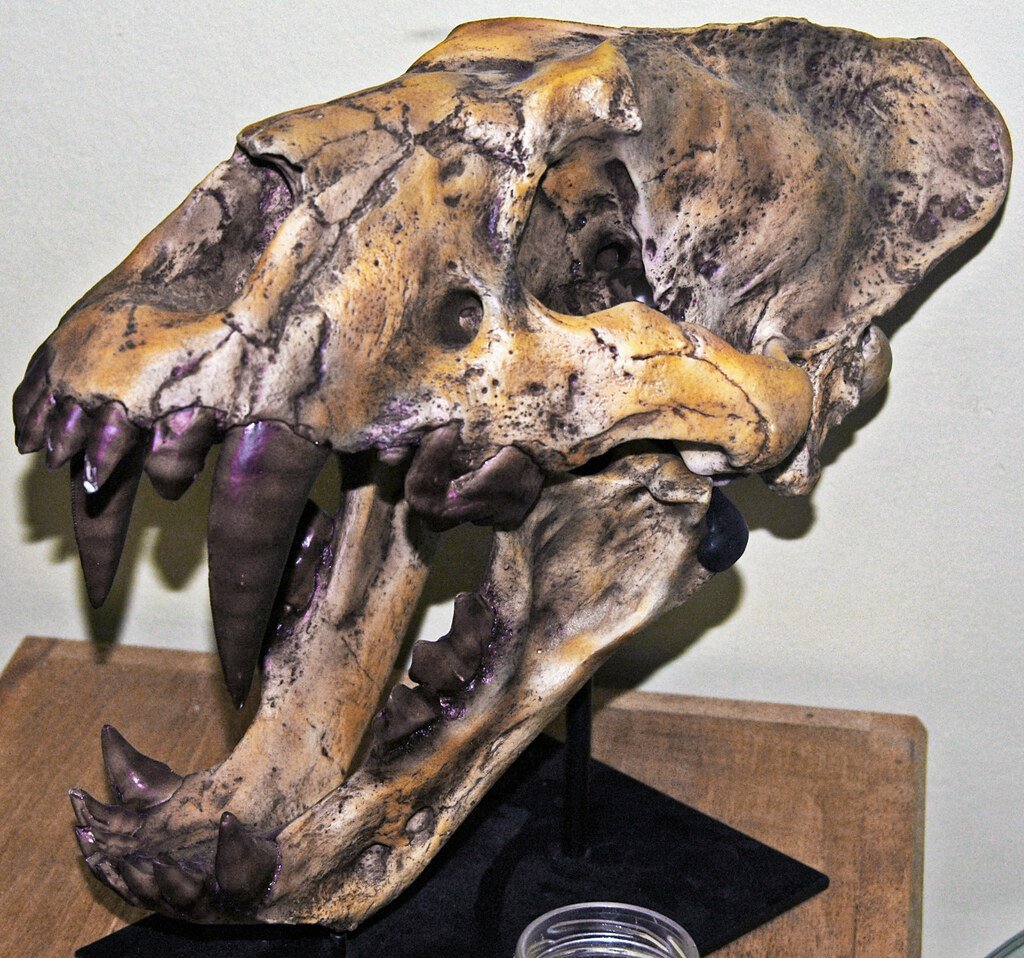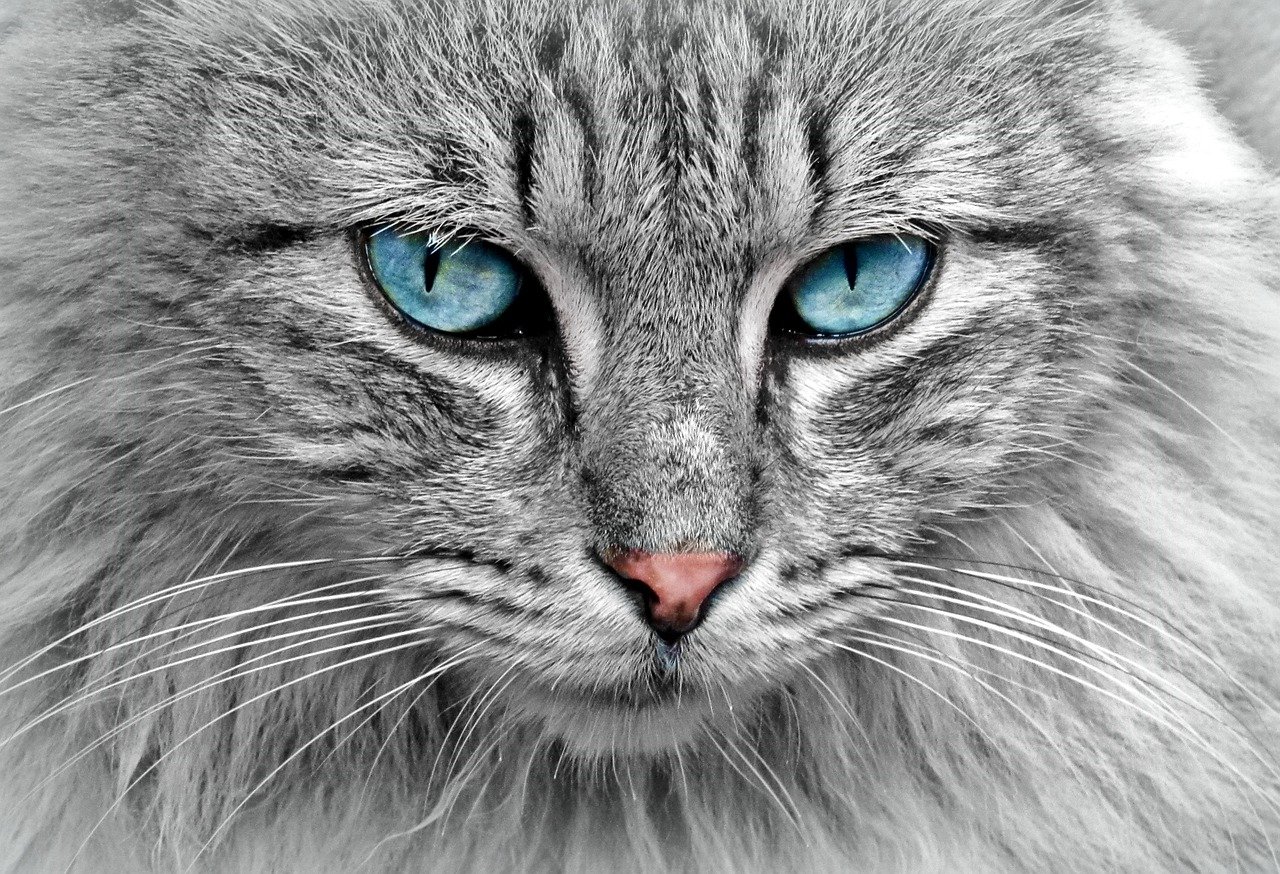Smilodon fatalis — The Hollywood Star

When most people think of saber-toothed cats, they’re picturing Smilodon fatalis. This powerful predator roamed North America during the Pleistocene epoch, and its fossils have been discovered in incredible numbers at the La Brea Tar Pits in Los Angeles. What made this cat truly remarkable wasn’t just its seven-inch canine teeth, but its incredibly muscular build that was more bear-like than modern cat-like.
Unlike today’s big cats, Smilodon fatalis was built for power rather than speed. Its front legs were massively muscled, designed to wrestle down prey much larger than itself. The famous saber teeth weren’t just for show — they were precision instruments that required perfect positioning to deliver a killing bite to the throat or belly of massive prey like ground sloths and bison.
Machairodus giganteus — The Original Giant

Long before Smilodon ruled the Americas, Machairodus giganteus dominated the landscapes of Africa, Europe, and Asia. This massive predator lived between 15 and 2 million years ago, making it one of the longest-surviving saber-toothed lineages. Standing nearly four feet tall at the shoulder, it was larger than any modern big cat and possessed sabers that could reach nearly five inches in length.
What sets Machairodus apart is its incredible geographic range and evolutionary success. Fossil evidence shows these cats adapted to diverse environments, from African savannas to European forests. Their robust build and powerful jaws made them apex predators capable of taking down the largest herbivores of their time, including early elephants and rhinoceros species.
Homotherium serum — The Scimitar Cat

While Smilodon gets most of the attention, Homotherium serum might have been the more successful hunter. Known as the scimitar cat for its curved, serrated canine teeth, this predator had a completely different hunting strategy. Its teeth were shorter than Smilodon’s but featured sharp, cutting edges that could slice through flesh like prehistoric scimitars.
Recent discoveries have revealed that Homotherium was likely the first saber-toothed cat to successfully hunt in coordinated groups. Cave paintings and fossil evidence suggest these cats worked together to bring down massive prey, including young mammoths. Their sloping backs and powerful hindquarters gave them a hyena-like appearance, but their hunting prowess was purely feline.
Thylacosmilus atrox — The Marsupial Impostor

Not all saber-toothed “cats” were actually cats at all. Thylacosmilus atrox lived in South America between 9 and 3 million years ago and was actually a marsupial — more closely related to kangaroos and opossums than to any feline. This remarkable example of convergent evolution developed saber teeth completely independently from true cats.
What makes Thylacosmilus truly extraordinary is that its saber teeth never stopped growing throughout its life. Unlike true cats, which had roots in their canine teeth, Thylacosmilus had ever-growing sabers that required constant use to prevent them from growing too long. This marsupial predator proves that the saber-toothed body plan was so successful that evolution invented it twice on separate continents.
Barbourofelis fricki — The American Pioneer

Before Smilodon arrived in North America, Barbourofelis fricki ruled the continent’s hunting grounds. Living between 16 and 9 million years ago, this cat represented one of the earliest saber-toothed lineages to establish itself in North America. Its fossils have been found across the Great Plains, where vast herds of early horses and camels provided abundant prey.
Barbourofelis had proportionally longer sabers relative to its body size than almost any other saber-toothed cat. These impressive weapons required specialized hunting techniques, and evidence suggests these cats may have been ambush predators that relied on surprise attacks rather than prolonged chases. Their extinction coincided with major climate changes that transformed North America’s grasslands, demonstrating how closely these apex predators were tied to their environments.
Megantereon cultridens — The Widespread Wanderer

Few saber-toothed cats achieved the geographic success of Megantereon cultridens. This medium-sized predator spread across Africa, Europe, Asia, and North America between 4 and 1.5 million years ago. Despite being smaller than giants like Smilodon, Megantereon’s widespread success suggests it was incredibly adaptable to different environments and prey species.
What made Megantereon special was its perfect balance of size and specialization. Its sabers were proportioned ideally for its body size, allowing efficient hunting without the mechanical constraints that plagued some larger species. Recent studies of its fossilized bones reveal evidence of frequent injuries, suggesting these cats lived dangerous lives in constant competition with other large predators including early humans.
Dinofelis piveteaui — The False Saber-Tooth

Sometimes called the “false saber-tooth,” Dinofelis piveteaui possessed enlarged canine teeth that were impressive but not quite true sabers. This cat lived in Africa between 5 and 1.4 million years ago and may have been one of the most significant predators in early human evolution. Fossil evidence suggests Dinofelis regularly hunted early hominins, including our direct ancestors.
What makes Dinofelis particularly fascinating is its potential role in shaping human evolution. Some researchers argue that predation pressure from cats like Dinofelis drove early humans to develop tools, cooperative hunting strategies, and even bipedalism as defensive adaptations. Cave sites across Africa contain both Dinofelis remains and early human fossils, painting a picture of a world where our ancestors lived in constant fear of these powerful predators.
Xenosmilus hodsonae — The Cookie-Cutter Killer

Discovered in Florida in 1994, Xenosmilus hodsonae represents one of the most unusual saber-toothed cats ever found. Its name means “strange knife,” and its teeth were unlike any other saber-toothed species. Instead of long, thin sabers, Xenosmilus had broad, flattened canines with sharp, serrated edges that worked like prehistoric cookie cutters.
This unique dental adaptation suggests Xenosmilus had a completely different hunting strategy from other saber-toothed cats. Rather than precision throat bites, these cats may have used their specialized teeth to inflict massive slashing wounds that caused prey to bleed out quickly. Only a few fossils of this species have been found, making it one of the rarest and most mysterious members of the saber-toothed cat family.
Ischyrosmilus johnstoni — The Tiny Terror

Not all saber-toothed cats were giants. Ischyrosmilus johnstoni, which lived in North America between 33 and 26 million years ago, was roughly the size of a modern lynx but packed impressive saber teeth for its small frame. This early saber-toothed cat proves that the saber-tooth body plan was successful across a wide range of body sizes.
Despite its small size, Ischyrosmilus was likely a formidable predator in its forest environment. Its proportionally large sabers suggest it specialized in hunting specific prey, possibly early deer or pig-like animals. The cat’s compact build and powerful forequarters indicate it was an ambush predator that relied on stealth and a powerful initial attack to subdue prey quickly.
Amphimachairodus giganteus — The Eurasian Giant

The largest saber-toothed cat ever discovered, Amphimachairodus giganteus, roamed the grasslands of Europe and Asia between 15 and 9 million years ago. This massive predator could weigh up to 490 pounds, making it significantly larger than any modern big cat. Its enormous size allowed it to hunt the largest herbivores of its time, including early elephants and giant rhinoceros.
What’s remarkable about Amphimachairodus is how it maintained its massive size across millions of years while other saber-toothed lineages experimented with different body plans. Fossil evidence suggests these cats were highly successful apex predators that dominated their ecosystems. Their extinction appears to be linked to climate changes that reduced the populations of large herbivores they depended on.
Paramachairodus orientalis — The Asian Innovator

Paramachairodus orientalis represents a crucial evolutionary link in saber-toothed cat development. Living in Asia between 15 and 9 million years ago, this species shows the transition from early saber-toothed forms to the more specialized hunters that would follow. Its fossils have been found across China, providing insights into how these cats adapted to Asian environments.
What makes Paramachairodus particularly interesting is its dental innovation. Unlike earlier forms, this species developed more efficient saber teeth that were better integrated with its skull structure. These improvements would be refined in later species, making Paramachairodus an important evolutionary stepping stone in the development of more advanced saber-toothed hunters.
Lokotunjailurus emageritus — The African Enigma

One of the most recently discovered saber-toothed cats, Lokotunjailurus emageritus lived in Africa between 5.2 and 4.9 million years ago. Its fossils were found in Kenya and represent a unique lineage that developed massive sabers relative to its body size. This cat’s discovery has revolutionized our understanding of saber-toothed cat diversity in Africa.
The extreme proportions of Lokotunjailurus suggest it was highly specialized for hunting specific prey types. Its massive canines would have required careful positioning and powerful neck muscles to use effectively. The cat’s relatively recent discovery reminds us that many saber-toothed species likely remain undiscovered, buried in fossil beds around the world.
Promegantereon ogygia — The Mediterranean Hunter

Promegantereon ogygia prowled the Mediterranean region between 12 and 11 million years ago, representing one of the earlier experiments in saber-toothed cat evolution. Its fossils have been found in Spain and France, providing evidence of how these cats adapted to European environments during the Miocene epoch.
This species showcases the early development of saber-toothed hunting strategies in Europe. Its moderate-sized sabers and robust build suggest it was transitioning from more generalized hunting to the specialized techniques that would characterize later saber-toothed species. Promegantereon’s success in Mediterranean environments demonstrates the adaptability of early saber-toothed lineages to diverse habitats.
Metailurus major — The Evolutionary Bridge

Metailurus major occupied a unique position in saber-toothed cat evolution, living in Africa, Europe, and Asia between 9 and 5.2 million years ago. This species possessed moderately enlarged canines that weren’t quite true sabers but were significantly larger than those of modern cats. This intermediate form provides crucial insights into how saber teeth evolved.
What makes Metailurus particularly valuable to paleontologists is its widespread distribution and long evolutionary history. Fossils of this species help scientists understand how saber-toothed cats dispersed across continents and adapted to different environments. Its success across multiple continents suggests it was an extremely adaptable predator that could thrive in various ecosystems.
Rhizosmilodon fiteae — The Forest Specialist

Rhizosmilodon fiteae lived in the forests of North America between 5 and 4.9 million years ago and represents one of the smaller saber-toothed cat species. Its fossils have been found primarily in Florida, where it inhabited dense woodland environments quite different from the open grasslands preferred by many other saber-toothed species.
This cat’s forest habitat required different hunting strategies than those used by grassland species. Its more moderate saber teeth and agile build suggest it was adapted for hunting in dense vegetation where long sabers might have been a disadvantage. Rhizosmilodon proves that saber-toothed cats successfully adapted to virtually every type of environment available to large predators.
The Final Roar

The extinction of the last saber-toothed cats around 10,000 years ago marked the end of one of evolution’s most successful predator designs. These magnificent hunters dominated ecosystems across six continents for over 40 million years, adapting to climates from tropical forests to arctic tundra. Their disappearance coincided with major climate changes and the rise of human civilizations, but their legacy lives on in the fossil record.
Each species tells a unique story of adaptation and survival in prehistoric worlds we can barely imagine. From the massive Amphimachairodus hunting giant elephants in Asian grasslands to the tiny Ischyrosmilus stalking through ancient forests, these cats represent nature’s endless creativity in designing perfect predators. What other prehistoric secrets are still waiting to be uncovered in fossil beds around the world?
Hi, I’m Bola, a passionate writer and creative strategist with a knack for crafting compelling content that educates, inspires, and connects. Over the years, I’ve honed my skills across various writing fields, including content creation, copywriting, online course development, and video scriptwriting.
When I’m not at my desk, you’ll find me exploring new ideas, reading books, or brainstorming creative ways to solve challenges. I believe that words have the power to transform, and I’m here to help you leverage that power for success.
Thanks for stopping by, Keep coming to this website to checkout new articles form me. You’d always love it!






